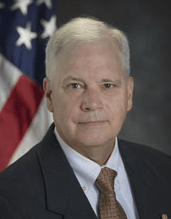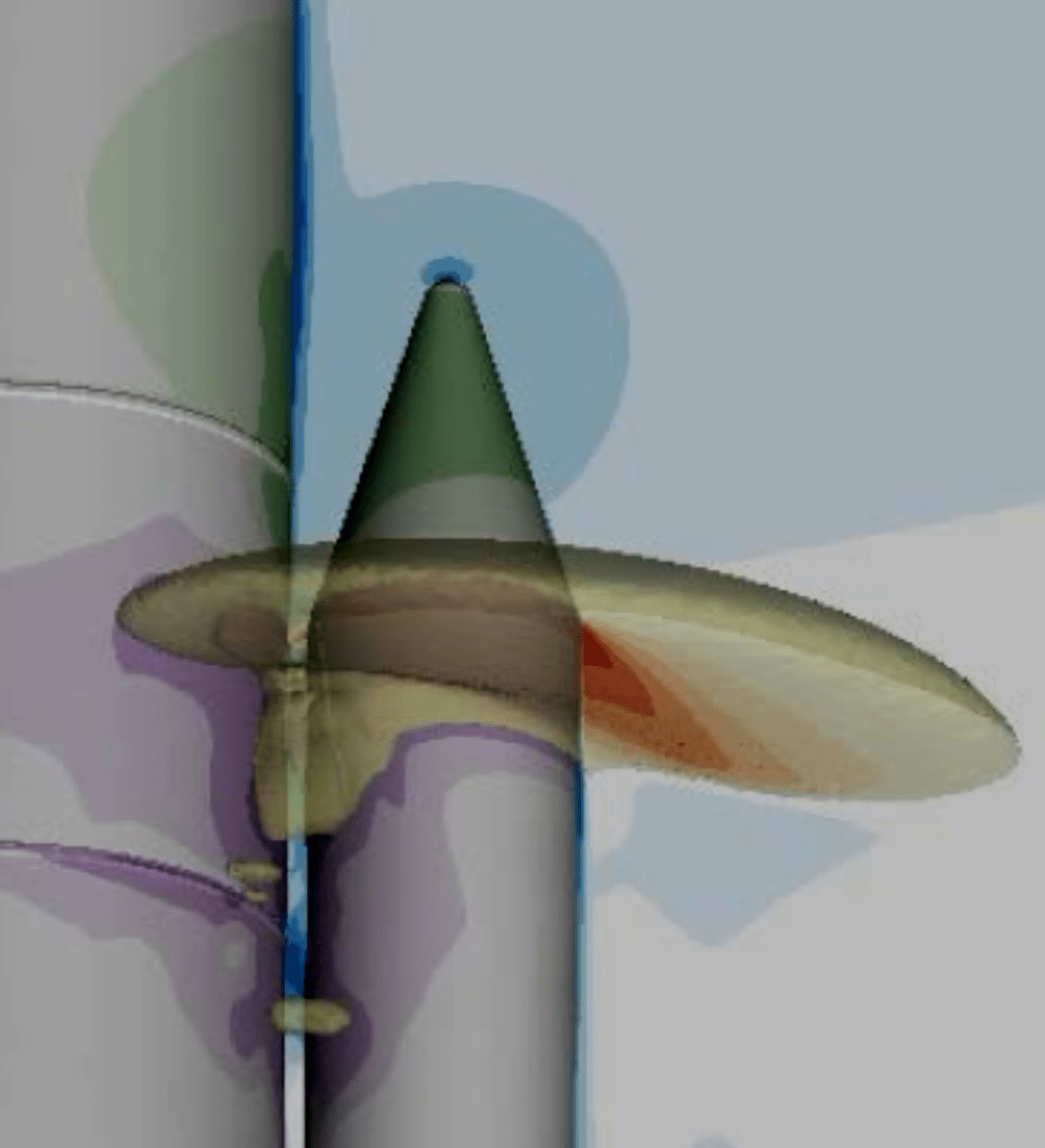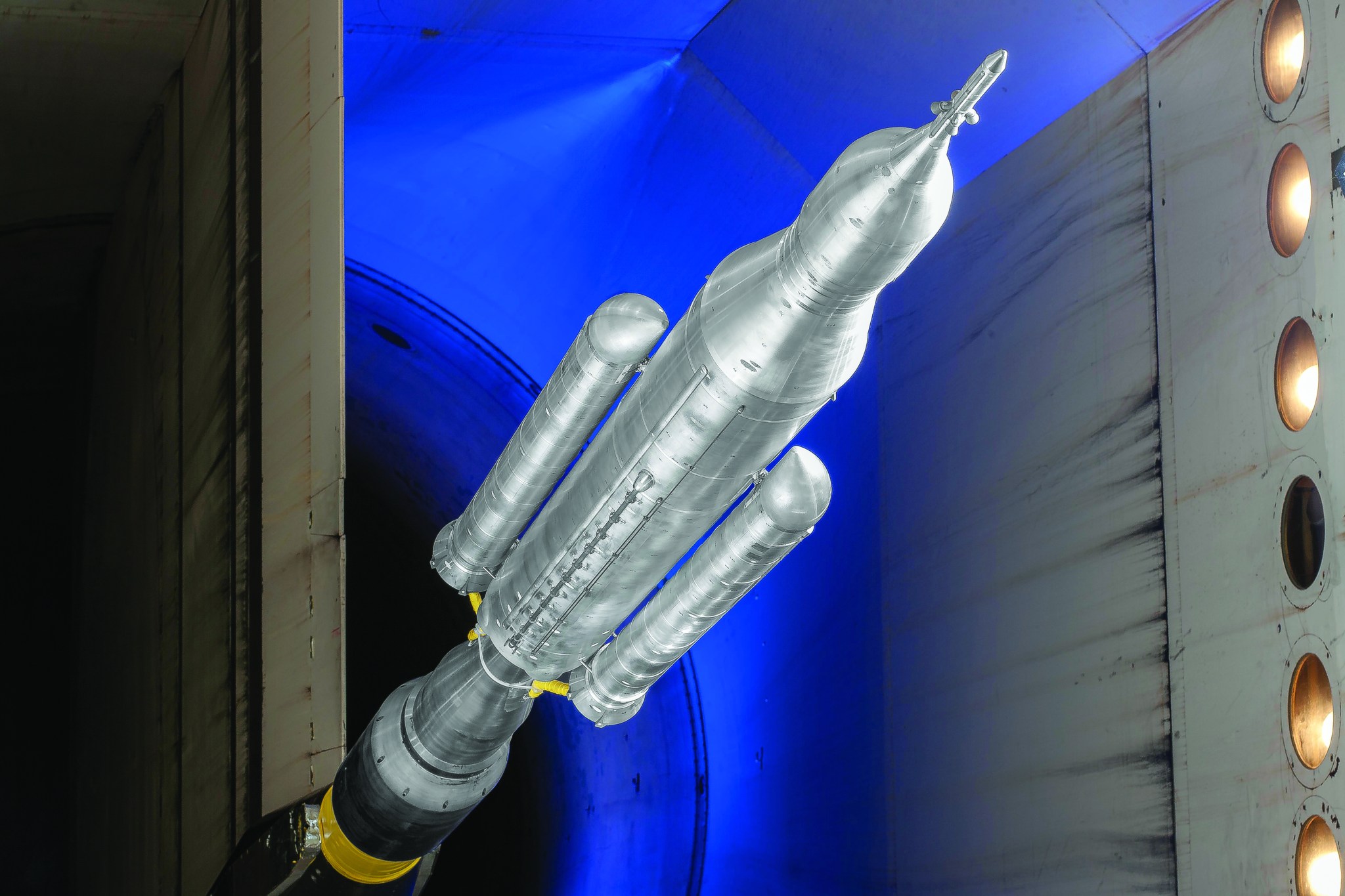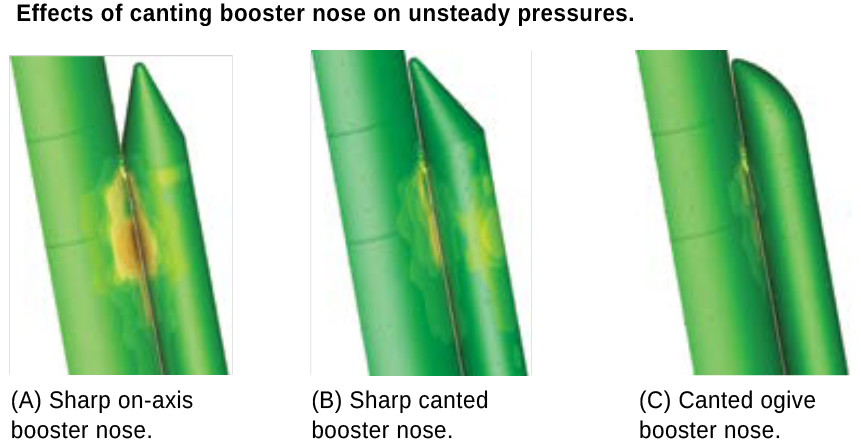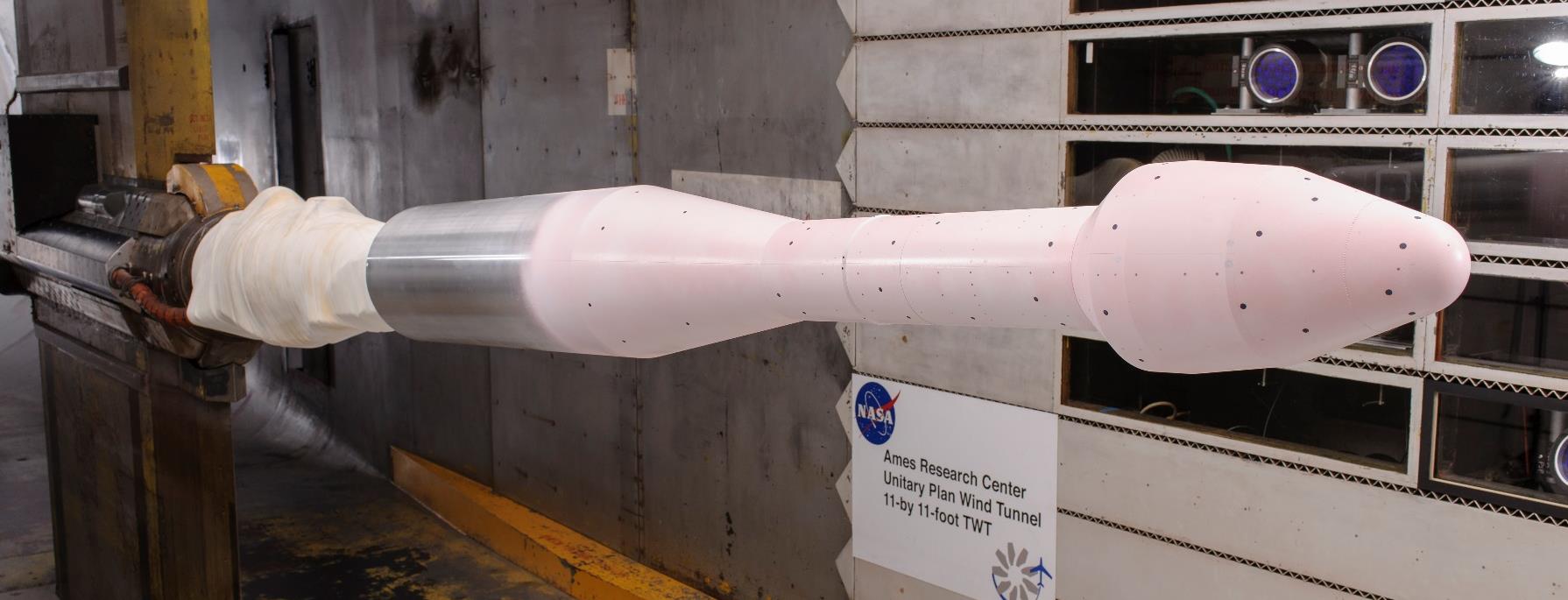This article is from the 2015 NESC Technical Update.
There is a very short window of time, about 30 seconds, between launch and a rocket’s transition from subsonic to supersonic flight, when the airflow around the vehicle begins a chaotic dance of sorts. It is called buffet, and it likes to occur in the so-called transonic flight regime. NASA engineers and the aerospace industry have been wrestling with the unpredictability of transonic flight for over half a century, since before Chuck Yeager successfully piloted the Bell X-1 beyond the sound barrier and launched us into the space age.
Today, as the design of the Orion Multi-Purpose Crew Vehicle and the Space Launch System (SLS) takes shape, the challenge persists. Orion/SLS is a larger, more geometrically complex spacecraft than those flown during the Apollo era, and engineers are facing new challenges as they navigate Orion’s journey through the transonic flight regime.
Transonic Flight
In transonic flight, a spacecraft is transitioning from subsonic to supersonic flight, but portions of the vehicle can generate supersonic flow before it actually goes supersonic. The ring structure in the computational fluid dynamics (CFD) run pictured at right is a region of supersonic flow embedded in subsonic flow. Likewise, even after the vehicle has gone supersonic, portions of the flow can decelerate into subsonic. It is that mix of subsonic and supersonic that causes the chaotic air flow around the spacecraft.
Who Benefits from Improved Buffet Environment Prediction?
NASA’s commercial partners, the aeronautics industry, the launch vehicle community, and the spacecraft community could benefit from new prediction methods, says Schuster. “For a long time we focused our computations on steady flows. Now we’re pushing those codes to try and predict unsteady flow, which helps with maneuvering aircraft, buffet, and many other things, so understanding these techniques for unsteady flow has a wide range of application across the industry. We spent about 20 years perfecting steady flow,” he says. “I see us spending another 20 getting our capability up to speed on unsteady flow as well.”
Through NESC assessments, Dr. David Schuster, NASA Technical Fellow for Aerosciences, has been tackling some of these challenges, most recently with buffet environments, which can occur during transonic flight.
“The buffet environment is the fluctuating pressure that generates an oscillating load on the vehicle,” says Dr. Schuster. That fluctuating pressure can cause shock waves, which interact with the boundary layer or the flow of air closest to the vehicle. “The shock wave can cause that flow to detach or separate,” he explains. “And when it does, it becomes very chaotic and generates this fluctuating pressure that can affect the structure and other systems on the vehicle.”
Besides shock waves, buffet environments can also be triggered by abrupt changes in vehicle geometry, for example, where support hardware is located or where there are changes in the vehicle’s diameter. “Air flow accelerates around these corners, can’t make the turn, and then separates and starts rolling off,” Dr. Schuster states.
Whatever their cause, buffet environments can elicit a buffet response in the spacecraft, causing things to shake. And for critical systems, like avionics, that shaking can cause these systems to fail.
“And if they fail, then the vehicle fails,” he notes. In addition, spacecraft tend to enter the transonic range at the same time they reach their maximum dynamic pressure, or the maximum loads the vehicle will encounter during its flight. “So these buffet fluctuations are hitting the vehicle right at the worst time. That’s why the whole buffet problem is so important.”
New Computational Approaches
When the SLS Program requested an assessment to help determine the potential for high buffet environments on specific areas of the spacecraft, Dr. Schuster’s NESC team needed to investigate both old and new techniques for acquiring buffet data. “We haven’t designed a new launch vehicle in quite a while,” says Dr. Schuster, and because the Orion/SLS will carry astronauts to the Moon and beyond, “there are more stringent requirements when we put humans in the loop.”
Existing data from Apollo was a starting point, but ultimately, “a lot of what we had at our disposal from the Apollo era isn’t applicable to SLS,” he explains. “It has to do with the Orion/SLS shape. The problem is very geometry dependent. SLS has boosters strapped on the outside. And we’ve added the new Alternate Launch Abort System. It looks very different from what we sent up with Apollo, so it generates a very different buffet environment.”
Because computational methods used in the past were not always successful in predicting these environments, NASA needed a new approach. The NESC team worked with an engineering team at LaRC who had developed a hybrid CFD method using Reynolds Average Navier Stokes and Large Eddy Simulation. The NESC team used that hybrid method to predict the buffet environment on a specific area of the SLS. Then they compared those results with data gathered from recent NESC wind tunnel tests to confirm whether the CFD code was accurate in its predictions. “We found out this was doing a better job than we had ever experienced before,” Dr. Schuster says. “It was looking like that hybrid scheme was a real possibility.”
Excited with the preliminary results, the team wanted to take it a step further. “Since we knew we had a high buffet environment in a specific region,” Dr. Schuster says, “could we use that CFD code to change certain design parameters on the vehicle and lessen the buffet problem?”
The answer was yes. “We started focusing on the shape of the booster nose cones,” he says. Currently, the SLS nose cones resemble those flown on Shuttle, a conical shape with a spherical nose cap. The team examined different designs with more aerodynamically streamlined shapes. “The CFD code was telling us that we could affect the buffet environment pretty significantly by changing the nose cone shape. We could easily cut the buffet environment in half.”
But the proof would come from testing these new designs in a wind tunnel, which they did by taking the most promising designs, building them, and attaching them to an SLS model. “We were able to demonstrate that the wind tunnel predicted the same buffet environment drops as the CFD code.” That was big news, Dr. Schuster adds. “Now we have a computational tool that we can use, outside of the wind tunnel, to cycle through numerous designs before we actually go and commit to building hardware.”
For now, there are limits to using this new CFD tool. It is expensive to run as it ties up computer resources for weeks at a time. “But for specific problems where we want to look at the detailed physics of what’s going on,” Dr. Schuster says, “this tool gives us a capability that we never had before.”
To make this new CFD tool an accessible, functioning engineering tool will take time. “What we really want is to get this into the hands of the engineers so they can use it. But first we have to reduce the time it takes to generate data so it doesn’t bog down computer resources. There’s a lot of work to do, but it really shows a lot of promise.”
Validating CFD Approaches with New Wind Tunnel Measurement Technology
In the meantime, wind tunnels are still the main resource for gathering buffet environment data, so work continues to make them better at that job. “The wind tunnel tests to measure this buffet issue require that we measure the pressure at a large number of locations on the surface of the vehicle,” says Dr. Schuster. To do that, engineers employ unsteady pressure transducers, up to 400 of them on a single SLS model. But the transducers are expensive and add significant costs to the wind tunnel testing process. And even with 400 transducers, engineers are limited in how closely together they can be applied, which leaves gaps in the data measurement.
“It’s just not enough to get the resolution we need to accurately predict what is happening on the vehicle. So we’re always doing a lot of interpolation and trying to use engineering judgment to account for these gaps.”
But a new technology has recently emerged to fill these gaps. Late in 2015, the NESC team assisted in testing unsteady pressure sensitive paint (uPSP). When painted on a model, the uPSP can respond to pressure on the model at such a fast rate that engineers can measure the buffet frequencies. “The model is bombarded with light so that we can see every nook and cranny on the vehicle. Then we videotape the model with high resolution cameras.”
The result is hundreds of thousands of pixels, each denoting a pressure point. Instead of being limited to four or eight transducers placed around a circumference of the model, uPSP leaves no gaps. “It allows us to get a much more comprehensive view point of the fluctuating pressure field on the vehicle, without having to worry if some phenomenon occurred between our sensors that we didn’t pick up.”
Weighing the Benefits of Buffet Prediction
This is an exciting time for Dr. Schuster and the Aerosciences community. Adapting new CFD codes and pressure sensitive paint to the process of predicting buffet environments is shaping up to be a tangible advancement in the discipline. But he sees the benefits taking an even further leap forward.
“If we want to go to Mars,” he says, “we could just build margin into our vehicles so they’ll be robust to this buffet problem. But we’d likely build a vehicle that’s three times stronger than it needs to be, just to be sure it can survive the buffet, and make up for any uncertainties we might have in our ability to predict it.”
But that makes the vehicle a lot heavier than it needs to be, when weight would already be at a premium on long-term missions. “Being able to predict buffet environments more accurately will allow us to reduce the margin, reduce the weight, and give us a more efficient vehicle. Then we can use that weight to actually execute the mission,” says Dr. Schuster. “That’s the real benefit.”



























